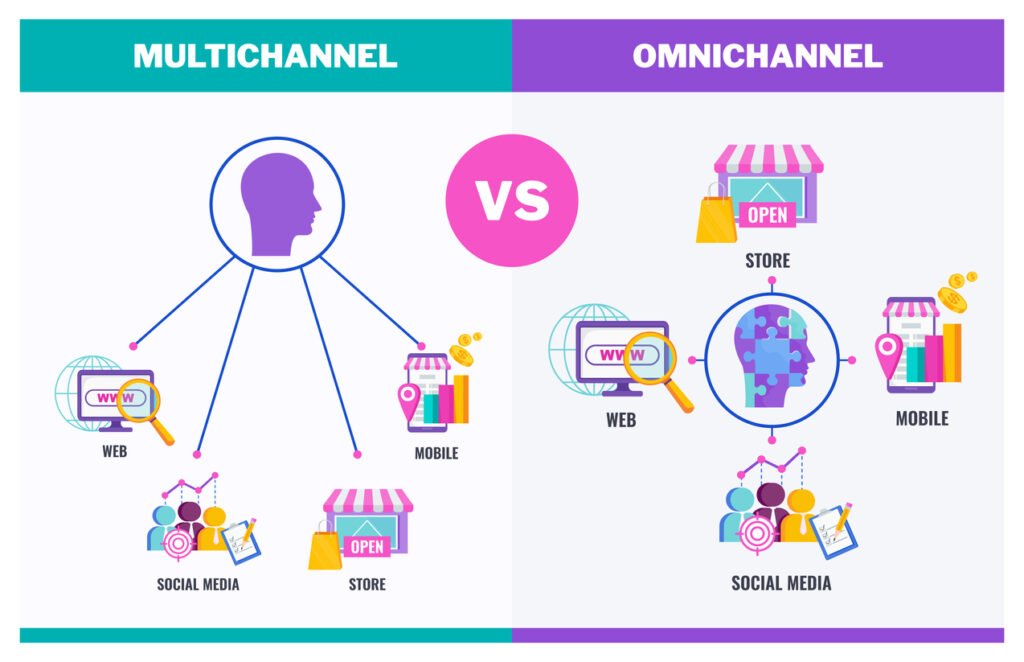In today’s fast-paced and digitally interconnected world, businesses face a unique challenge: reaching and engaging customers where they are. This is where the concept of omnichannel marketing takes center stage.
Omnichannel marketing is more than just a buzzword. It’s a strategic approach that provides customers with a consistent and personalized experience. It’s about breaking down the barriers between channels, fostering brand loyalty, and enhancing the overall customer journey.
To truly understand the power and potential of omnichannel marketing, let’s delve into the remarkable success stories of some industry leaders.
What is Omnichannel Marketing?
Omnichannel marketing is a holistic approach to marketing. It seeks to create a seamless and integrated experience for customers across many channels. The focus is on ensuring that consumers receive a consistent message and experience. This is regardless of whether it is through physical stores, websites, mobile apps, or social media.
Such an approach treats all channels as interconnected. This allows customers to switch between them effortlessly. It’s about breaking down the silos between channels to provide a holistic customer journey.
In today’s digital world, customers are constantly connected and have many touchpoints with a brand. Omnichannel marketing has thus become crucial. It allows businesses to meet their customers wherever they are. This provides them with convenience and personalized experiences.
Omni vs Multi vs Single Channel
Multichannel marketing involves a brand utilizing various channels to reach its audience. But these channels may all operate independently. Each channel often has its own strategies and objectives. While it can increase the brand’s reach, it may result in inconsistent messaging and customer experiences.
Single-channel marketing is the most limited approach. It’s where a brand focuses on a single marketing channel, such as an online store or a physical location. This approach can be effective in specific situations. But it lacks the versatility and reach of multichannel and omnichannel strategies.
In essence, the key distinction lies in the level of integration and consistency. Omnichannel marketing is all about creating a unified experience. Multichannel and single-channel strategies often lack this level of cohesion and seamless transition for customers.

Let’s dive into some of the best examples of omnichannel marketing done right!
Starbucks
Starbucks is the first brand on our list of top omnichannel marketing examples. They have successfully integrated their online and offline channels to provide a seamless customer experience. Customers can order their favorite coffee through the Starbucks app and pick it up in-store.
They also use personalized marketing strategies by sending targeted promotions and offers. They do this for their customers via email and the Starbucks app.
This level of personalization enhances the customer experience. It also increases customer engagement and loyalty. By effectively integrating their channels and personalizing their marketing messages, Starbucks has set a benchmark for successful omnichannel marketing.
Nike
Nike is one brand that has taken omnichannel marketing to the next level and makes for the perfect example. The NikePlus program offers personalized experiences to members. They get exclusive access to new product launches and special events.
Nike seamlessly integrates their online and offline shopping experiences. This allows customers to easily switch between browsing online and trying on products in-store.
The sneaker brand offers customization options for many of their products. It allows customers to create shoes that suit their individual style and preferences. They can choose from a variety of colors, patterns, and materials to design their own unique sneakers or apparel. This level of personalization enhances the customer’s shopping experience.
Sephora
Sephora is yet another example of omnichannel marketing done right. Their Beauty Insider loyalty program seamlessly integrates across many channels. Customers can earn points and rewards whether they shop in-store or online.
The beauty brand takes personalization to the next level. It offers in-store beauty consultations. The best thing about these is that they take into account a customer’s online purchase history.
Their virtual try-on features on the website and mobile app are something else. They give customers the opportunity to experiment with different beauty products before making a purchase.
Sephora’s commitment to creating a seamless and personalized shopping experience truly solidifies their position as a leader in the beauty industry.
The success stories of Starbucks, Nike, and Sephora exemplify the power of omnichannel marketing in shaping the modern customer experience. These industry leaders have shown that a seamless and integrated approach across physical stores, online platforms, mobile apps, and social media can drive exceptional results.
They offer customers a consistent, personalized, and interconnected journey. And by doing so, they’ve achieved increased brand loyalty, higher sales, and a competitive edge. In this dynamic landscape, the journey to creating a truly omnichannel brand experience is an ongoing one. It’s clear that businesses that adapt to evolving customer expectations and preferences will continue to thrive.
Ready to forge deeper connections with your customers across every platform? Connect with us, and let’s tailor your omnichannel strategy for impactful engagement!

















